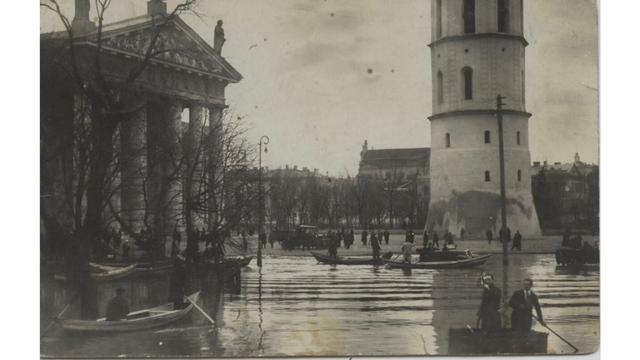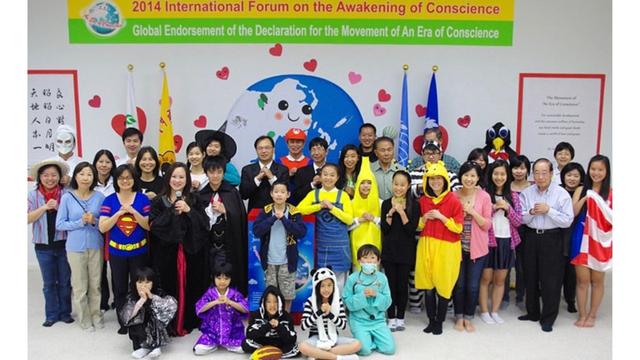The political consequences of a 1931 incident in Vilnius, when a Polish student died trying to rescue a drowning Jewish child, demonstrate that friendship may change the course of history. We hope this will also happen in the Tai Ji Men case.
by Stefania Cerruti*
*A paper presented at the webinar “Friendship, Peace, and the Tai Ji Men Case,” co-organized by CESNUR and Human Rights Without Frontiers on July 30, 2022, United Nations International Friendship Day.

As I mentioned in a previous webinar of this series, I am the External Relations Manager of MEDIS, the Major Emergencies and Disasters International School, an organization promoting research and education in the field of major disasters.
Today is the International Day of Friendship, and one can legitimately ask what friendship has to do with disasters. In fact, quite a lot. What we learn from our studies is that, when disasters strike, grassroots solidarity is a powerful force to limit their consequences. Governmental and even international intervention is important but there are problems that can only be solved through the solidarity of those affected.
A moving story I learned when visiting Lithuania in 2020 may illustrate this point. In the center of Vilnius, I was shown a small, almost hidden monument. It is somewhat ruined, and its meaning is easy to miss. It is a work of Bolesław Bałzukiewicz, a Polish artist who sculpted several monuments in Vilnius.
It is a rectangular piece of black granite inserted between two smaller columns of white granite. On the top of the central piece there is an image of Our Lady of the Gate of Dawn, the most popular icon of the Virgin Mary in Lithuania. At the bottom, a quote from Apostle Paul’s First Letter to the Corinthians, whose meaning is that it is preferable to seek the common good of the community than our own personal good.
In the center, a story is told in Polish about a disaster. In April 1931, a catastrophic flood wave hit Vilnius. All of a sudden, even the placid Vilnia river became dangerous. After I learned about the story, I went to see the area where it took place, near the beautiful Gothic church of St. Anne and a bridge leading to the part of the city called Užupis, which is now famous because artists proclaimed it symbolically an “independent republic.” The river looks very quiet, but it was not so in 1931.

Before the Holocaust, at least one third of the population of Vilnius consisted of Jews. A group of Jewish children looked at the growing river with curiosity, and some went too close. A four-year-old child called Chackiel Charmac felt into the threatening waters of river Vilnia.
At this stage, friendship manifested itself. A Polish Catholic high school student called Mieczysław Dordzik, who befriended his local Jewish neighbors, decided that he could not let the Jewish boy die and jumped into the river. Others came and tried to rescue both the Polish and the Jewish young boys. They managed to extract the Jewish child out of the river, but the Polish boy was taken by the waters and his dead body was recovered only some days later. Unfortunately, the Jewish child Chackiel also died shortly thereafter as too much water had entered his lungs.
It is an extraordinary story of friendship, and it seems it had no happy end, as in fact both young boys died. But we should look at it more closely. Like in other European cities, in the 1930s Vilnius was plagued by anti-Semitic riots, and confrontations where Jews and non-Jews killed each other.
A friendship between Catholic and Jewish young boys was already exceptional. Even more exceptional was that the story so moved the population of Vilnius that ceremonies honoring the Polish boy’s heroic friendship put together Catholics and Jews. Some historians even believe that the large inter-religious movement celebrating Dordzik had an influence on the fact that, when the Nazis came, several Catholic families risked their lives to hide and help the Jews.
In this story we have everything: disasters, friendships, and how a simple friendship may lead to heroism and to long-lasting political consequences.
On October 25, 2014, celebrating United Nations Day, Dr. Hong Tao-Tze, the Grand Master (Shifu) of Tai Ji Men, whom I had the pleasure to meet when he visited Italy in 2019, spoke at the International Forum on the Awakening of Conscience. He noted that “In this generation of globalization, mankind is facing the biggest survival crisis in history.
The merciless ravages of natural disasters caused by climate change, terrorists and violence rampaging across nations, threats of deadly viruses like Ebola, and wars that violate the basic human right to life are all calamities that show the fate of the world is tightly intertwined for everyone; this is true for individuals, countries, or other forms of species, as long as we are living on the same planet, no one can escape from this bond.” These words might well have been written today. We have new viruses and new wars but we are still threatened by multiple disasters.

In that speech, Dr. Hong said that problems created by disasters cannot be solved by governments and international institutions alone. Each of us, as a world citizen, should contribute to the solution. We should listen to our conscience, work in harmony with the others, developing new friendships.
This is crucial when natural disasters hit. It is also crucial for human made disasters, including the “tax disaster” that affected Tai Ji Men. This is what we are doing today, and we are on the right path. Against injustice, Tai Ji Men mobilized and continuously expands an international army of friends. As confirmed by the story I shared with you today, friendship may change the world.
Source: Bitter Winter

